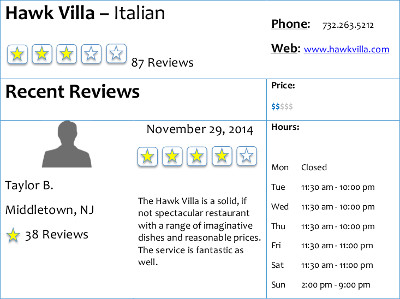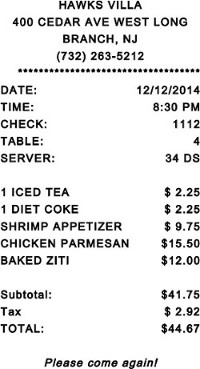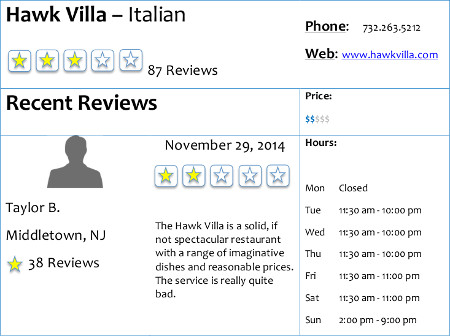Realism in Experimentation
Source: Laboratories of Gary Lewandowski, Dave Strohmetz, and Natalie Ciarocco—Monmouth University
In an ideal world researchers would conduct their studies in real world settings where behaviors naturally happen. For example, if you want to see what influences individuals’ voting behavior, it would be best to watch them vote. However, research in these settings is not always ethical or even practical. Further, a researcher may want more control over the setting to better pinpoint the exact variables that are influencing an outcome.
When researchers need to conduct studies in a lab, they try to optimize mundane realism, which means that they do everything they can to make the lab feel like a real-life experience. This video demonstrates a two-group design that examines how researchers use mundane realism in a lab to determine whether positive restaurant reviews are connected to diners’ level of tipping.
Psychological studies often use higher sample sizes than studies in other sciences. A large number of participants helps to ensure that the population under study is better represented and the margin of error accompanied by studying human behavior is sufficiently accounted for.
In this video, we demonstrate this experiment using just two participants, one for each condition. However, as represented in the results, we used a total of 200 (100 for each condition) participants to reach the experiment’s conclusions.
1. Define key variables.
- Create an operational definition (i.e., a clear description of exactly what a researcher means by a concept) of online restaurant reviews.
- For the purposes of this experiment, online restaurant reviews are reviews provided on a website that offer diners’ insights into the restaurant.
- A positive review is one that gives a general rating of 4 stars (out of 5) or higher and also compliments the service.
- A negative review is one that gi
- For the purposes of this experiment, online restaurant reviews are reviews provided on a website that offer diners’ insights into the restaurant.
Data were collected from 200 participants overall during a different instance of this study. This large number of participants helps to ensure that the results are reliable. If this research were conducted using just two participants, it’s likely that the results would have been much different, and not reflective of the greater population. A t-test was performed for independent means comparing the positive review condition to the negative review condition to see how they influenced tip amount (Figure
Some tipping experiments can occur in actual restaurants. For example, Guéguen and Jacob studied how the color of a waitresses’ tee shirt influenced tipping.1 To do this, servers at five restaurants wore red, blue, black, yellow, green, or white shirts. The results indicated that servers who wore red tee shirts received higher tips, but only when the customer was a male. In another study, Stohmetz et al. showed that customers who received candy with their bill tipped more than those who did
- Guéguen, N., & Jacob, C. Clothing color and tipping: Gentlemen patrons give more tips to waitresses with red clothes. Journal of Hospitality & Tourism Research. 38(2), 275-280. doi:10.1177/1096348012442546 (2014).
- Strohmetz, D. B., Rind, B., Fisher, R., & Lynn, M. Sweetening the till: The use of candy to increase restaurant tipping. Journal of Applied Social Psychology., 32(2), 300-309. doi:10.1111/j.1559-1816.2002.tb00216.x (2002).
- Billieux, J., Van der Linden, M., Khazaal, Y., Zullino, D., & Clark, L. Trait gambling cognitions predict near‐miss experiences and persistence in laboratory slot machine gambling. British Journal of Psychology. 103 (3), 412-427. doi:10.1111/j.2044-8295.2011.02083.x (2012).
スキップ先...
このコレクションのビデオ:

Now Playing
Realism in Experimentation
Experimental Psychology
8.2K 閲覧数

From Theory to Design: The Role of Creativity in Designing Experiments
Experimental Psychology
18.2K 閲覧数

Ethics in Psychology Research
Experimental Psychology
29.1K 閲覧数

Perspectives on Experimental Psychology
Experimental Psychology
5.6K 閲覧数

Pilot Testing
Experimental Psychology
10.3K 閲覧数

Observational Research
Experimental Psychology
13.0K 閲覧数

The Simple Experiment: Two-group Design
Experimental Psychology
72.2K 閲覧数

The Multi-group Experiment
Experimental Psychology
22.7K 閲覧数

Within-subjects Repeated-measures Design
Experimental Psychology
22.8K 閲覧数

The Factorial Experiment
Experimental Psychology
73.1K 閲覧数

Self-report vs. Behavioral Measures of Recycling
Experimental Psychology
11.8K 閲覧数

Reliability in Psychology Experiments
Experimental Psychology
8.4K 閲覧数

Placebos in Research
Experimental Psychology
11.6K 閲覧数

Manipulating an Independent Variable through Embodiment
Experimental Psychology
8.5K 閲覧数

Experimentation using a Confederate
Experimental Psychology
17.8K 閲覧数
Copyright © 2023 MyJoVE Corporation. All rights reserved


